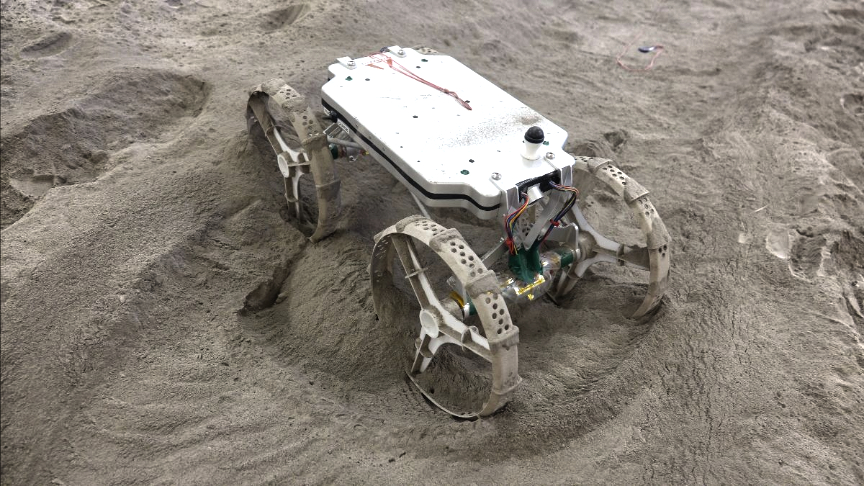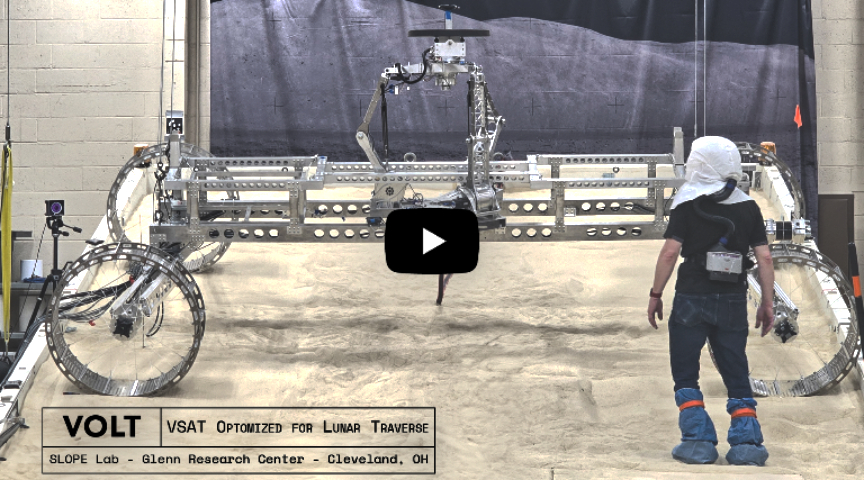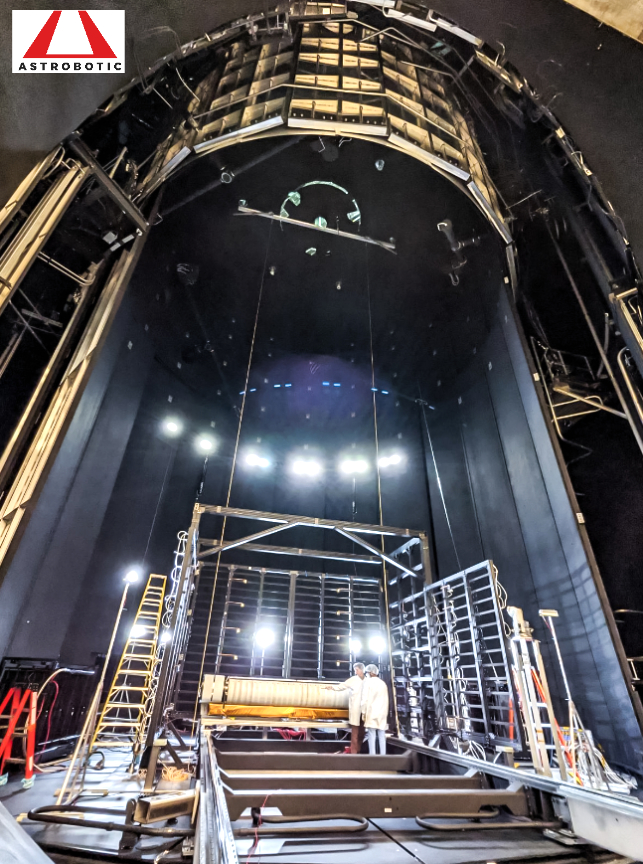
Astrobotic‘s Vertical Solar Array Technology (VSAT) is a key technology that will be used to harness solar energy for the company’s commercial, lunar power grid that is being prepped to enter thermal vacuum (TVAC) testing in Chamber A at NASA’s Johnson Space Center.
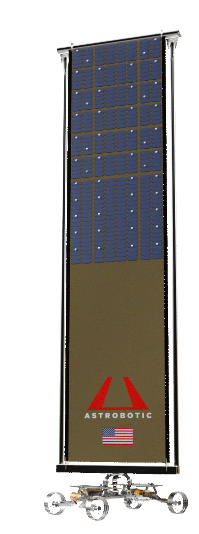
This follows recent testing of the Astrobotic rover for VOLT (VSAT Optimized for Lunar Traverse), at NASA’s Glenn Research Center (see below). VOLT brings together the 65+-foot-tall solar array in partnership with Redwire Space and is now being tested at NASA’s Johnson Space Center, with a minivan-sized lunar rover.
About LunaGrid…
LunaGrid is a solar-based power generation and distribution service that will deliver power by the Watt to landers, rovers, habitats, science suites, and other lunar surface systems. The service will enable systems from companies, governments, universities, and non-profits to survive the lunar night and operate indefinitely at the lunar south pole.
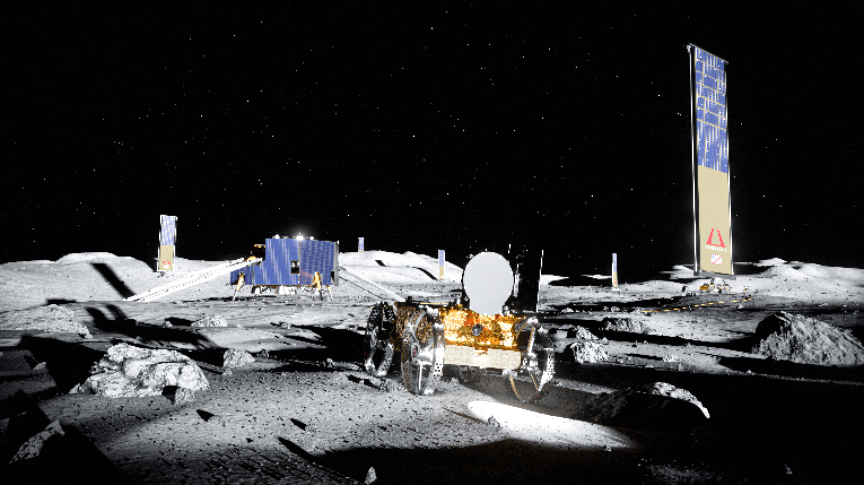
Additionally, an engineering model of VOLT’s mobile rover base underwent testing in the Simulated Lunar Operations Laboratory (SLOPE) at NASA’s Glenn Research Center in Cleveland. The tests demonstrated the vehicle’s stability, gimbal functionality, and sun tracking capabilities on an inclined bed of lunar regolith simulant. Watch the video at this direct link…
A wireless charging system developed by Astrobotic and WiBotic, with assistance from Bosch, the University of Washington (UW), and the NASA Glenn Research Center (GRC), underwent TVAC (above), vibration, radiation, cryo, and regolith testing. The data collected during this testing will guide system improvements, with the next iteration scheduled for construction and qualification by the end of the year. When on the lunar surface, the wireless charging system would deliver power from a LunaGrid node to power rovers, habitats, in-situ resource utilization plants, and other large surface infrastructure to survive the lunar night.
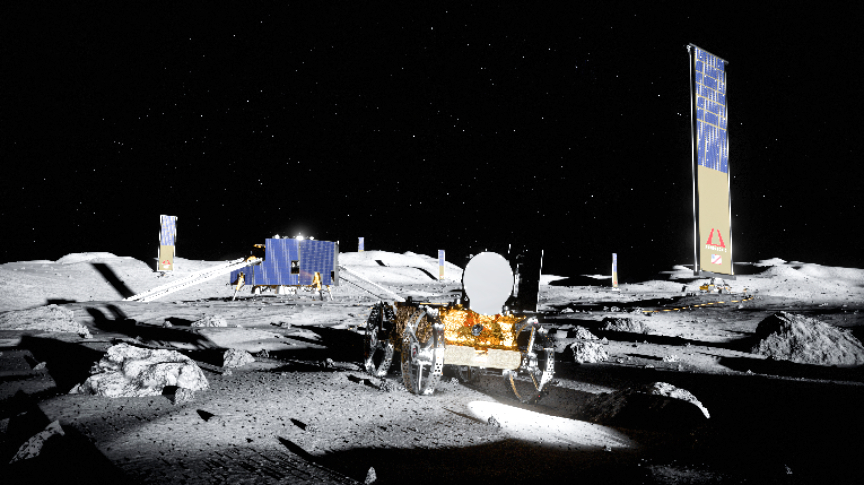
No earlier than 2026, Astrobotic will demonstrate LunaGrid-Lite, which aims to be the first system to transmit power between assets on the Moon. Recently, Astrobotic came closer to its goal by demonstrating power transfer with an ultra-light cable designed specifically for lunar applications.
The team successfully transmitted 1kW of alternating current (AC) power through 1,000ft of ultra-light cable. During the transmission, the team measured power factor, cable efficiency, voltage drop, apparent power, and reactive power. The tests were conducted with both spooled and unspooled cables. These early lab tests show that the cable can throughput 1kW real power at the desired transmission voltage (1kV) and frequency (1kHz) and slightly exceed our expected power factor and efficiency models.
During Astrobotic’s LunaGrid-Lite mission, where power transmission is vital, an Astrobotic CubeRover will unreel 1 kilometer of cable from an Astrobotic lunar lander and receive the first high voltage power transmitted through a cable across the lunar surface. This demonstration will pilot Astrobotic’s LunaGrid service, providing commercial power to future lunar customers.
